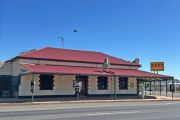
Cladding crisis threatens development as consultants lose insurance
The combustible cladding crisis is threatening to disrupt the development industry, putting projects at risk as building certifiers and fire engineers become uninsureable, and prompting state governments to step in as the insurer of last resort.
The dire state of Australia’s professional indemnity insurance market for building certifiers and surveyors is laid out in confidential research by PwC showing the sector has been unprofitable since 2011, with nearly $3.43 paid out in claims for every $1 received in premiums in 2017.
While the sector wrote $40 million in premiums in one year, one insurer alone faced cladding-related claims worth $50 million, PwC’s report shows.
It’s not just an Australian problem – insurers have been deserting the building industry PI sector in droves globally as cladding-related liabilities mount – but the situation reaches a new crisis on July 2, the date the last underwriter to issue new clients without carve-outs for cladding-related claims has said it will stop doing it.
State rules require building professionals to have clean, or unencumbered policies, and without it, they may have to stop working. And they need coverage – last year’s key Lacrosse judgment found the building surveyor, fire engineer and architect liable for the use of combustible cladding on the Melbourne residential tower that suffered a potentially fatal blaze.
“I am very much aware how real this issue becomes next week,” Victorian Premier Daniel Andrews said on Tuesday.
While it was a national issue that required a federal government response, Victoria – the state with the largest known number of privately owned buildings with combustible cladding – would not leave practitioners uninsured, Mr Andrews told a Property Council of Australia event.
“The feds should be involved – that would be good – but we won’t let anybody be uninsured,” he said.
“There are some steps that we can take. The state has stepped in – I’m a former health minister, I know this only too well. We have stepped in from time to time and been insurer of last resort. The [statutory] Victorian Managed Insurance Authority presents us with a vehicle to do that.”
Federal Industry Minister Karen Andrews was travelling on Tuesday. She recently said it was a matter for the states and the insurance industry.
If cladding coverage in PI policies disappears for consultants such as building certifiers and surveyors, then consumers – apartment owners – will lose a critical element of protection afforded to them, leaving few remaining avenues of recourse, particularly if the builder is no longer around.
The effects on industry of the loss of coverage would be “off the scale”, said David Blackett, a Sydney-based certifier.
“Major projects can have multiple approval milestones through the life of the project, like multiple sign-off stages,” Mr Blackett said.
“If you don’t have an alternative or existing professional capacity to service the projects, the projects will suffer. These projects will stop, they will slow down. Projects will be compromised, contracts will be challenged. At the end of the day, the economic impacts for industry are off the scale.”
Different states are taking different approaches to the impending crisis. NSW is preparing to allow certifiers to practices with exclusions on their policies, sources said. Last week, Queensland’s Ministerial Construction Council – where the PwC figures were presented – issued a statement acknowledging the responsibility of local government as a certifier of last resort.
While as many as four insurers were still writing PI policies, cladding exclusions were standard, cladding-related excesses were up to five times as large as excesses for other types of claim, and firms were seeing their premiums soaring, the PwC research shows.
Large building surveyors and certifiers surveyed by the consultancy were seeing their premiums more than triple, and the largest fire engineering consultancies faced more than a four-fold increase. The increases for architects were more modest. The largest premium rise cited by PwC for an architecture firm was 45 per cent.
PwC declined to comment on the research.
“We have a problem here that is worth many hundreds of millions, possibly billions, of dollars – who knows – and we’ve got a group of professionals that is generating perhaps tens of millions in premium at most, and those numbers just don’t add up,” said Darren Pavic, the broking manager of Bovill Risk & Insurance Consultants.
The situation could prompt state governments to allow registered professionals to keep practising even with exclusions on their policies – a temporary step the federal government has been encouraging the states to take. This was a likely outcome, Mr Pavic said.
“Unless something changes I think they will, because effective a few days from now, we’re not aware of any insurer wiling to issue policies to new clients without them,” he said.
“It’s a systemic issue that it seems the private insurance market is no longer prepared to underwrite. You can’t prescribe insurance if it isn’t realistically available. If what you want to prescribe isn’t available, you have to change what you’re prescribing.”
Others disagreed.
“I consider it highly unlikely,” said Bryce Anderson, a partner with Logie-Smith Lanyon Lawyers.
“Having a ‘cladding exclusion’ will mean no available insurance to cover consultants or for the public to access insurance for this issue.”
Building professionals faced a crisis last year ahead of their PI policy renewals, but many firms were able to find policies. This year, the last insurer that has stayed with the market, London-based HDI Global, which had its policies issued by Landmark Underwriting, has said it was unwilling to issue unencumbered policies – without exclusions – to new customers.
Globally, in the six years to 2017 – the year of London’s Grenfell Tower catastrophe – nearly two-thirds of all Lloyd’s of London syndicates, which underwrite PI insurance, made a loss. Last year, PI insurance was the second-least profitable line of business in the Lloyd’s market and globally insurers have been leaving the market, the PwC research shows.











